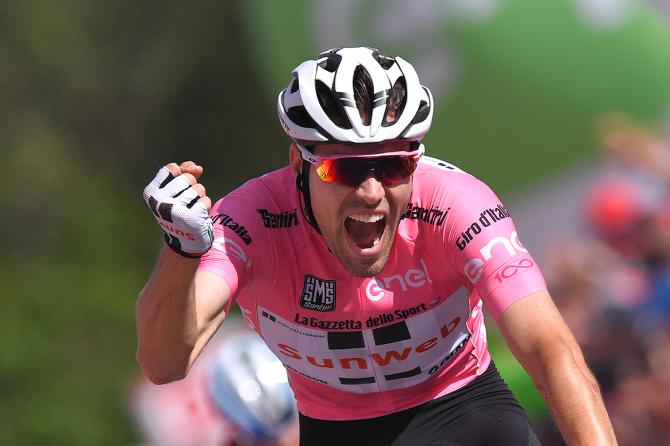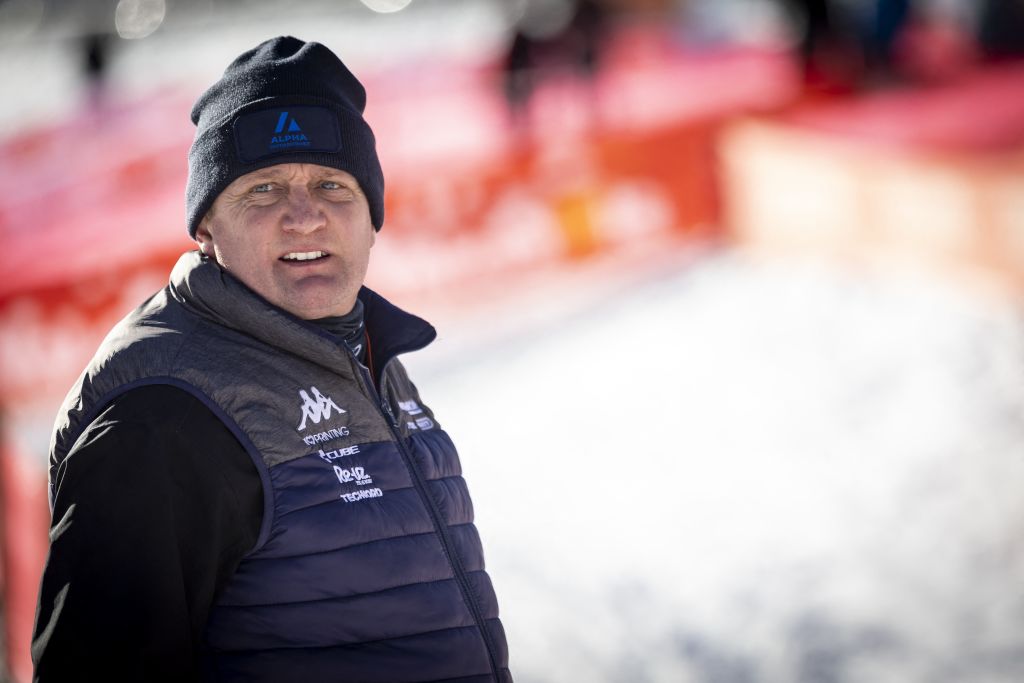Giro d'Italia analysis: Dumoulin dominant but not unbeatable
Quintana, Pinot and Nibali with ground to recoup in final week
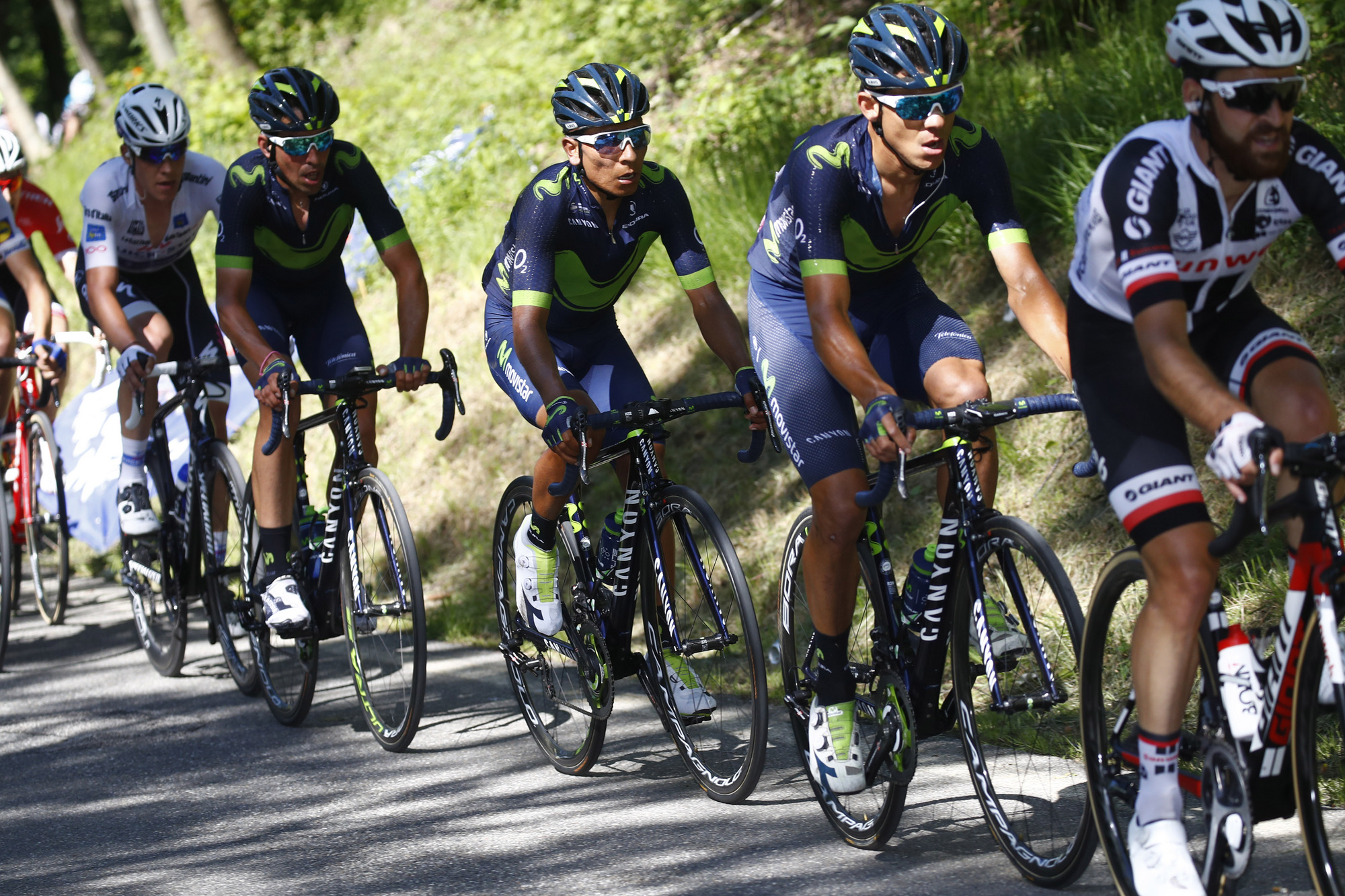
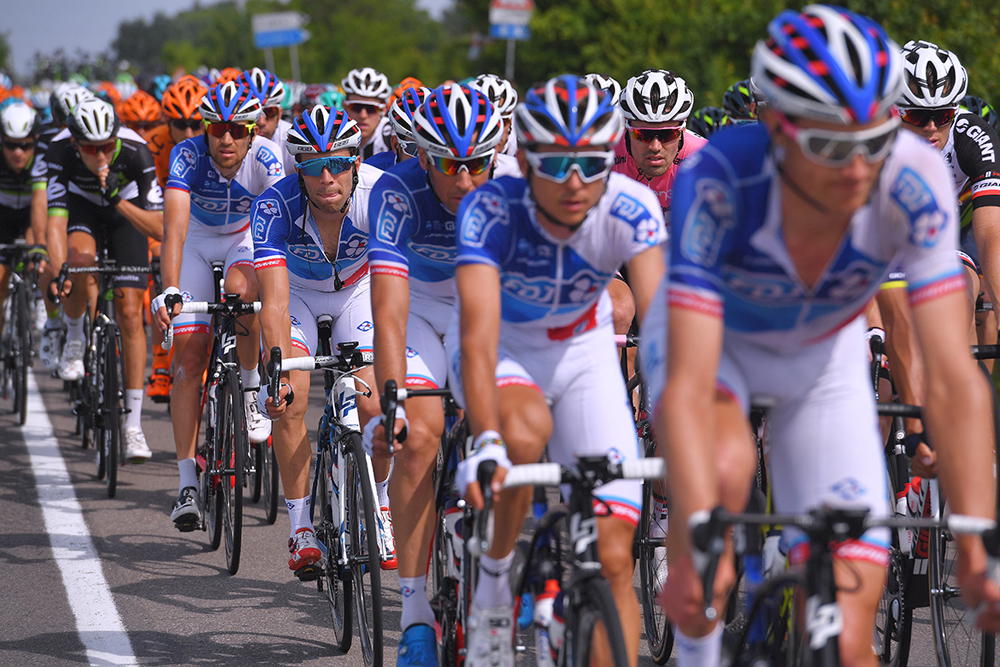
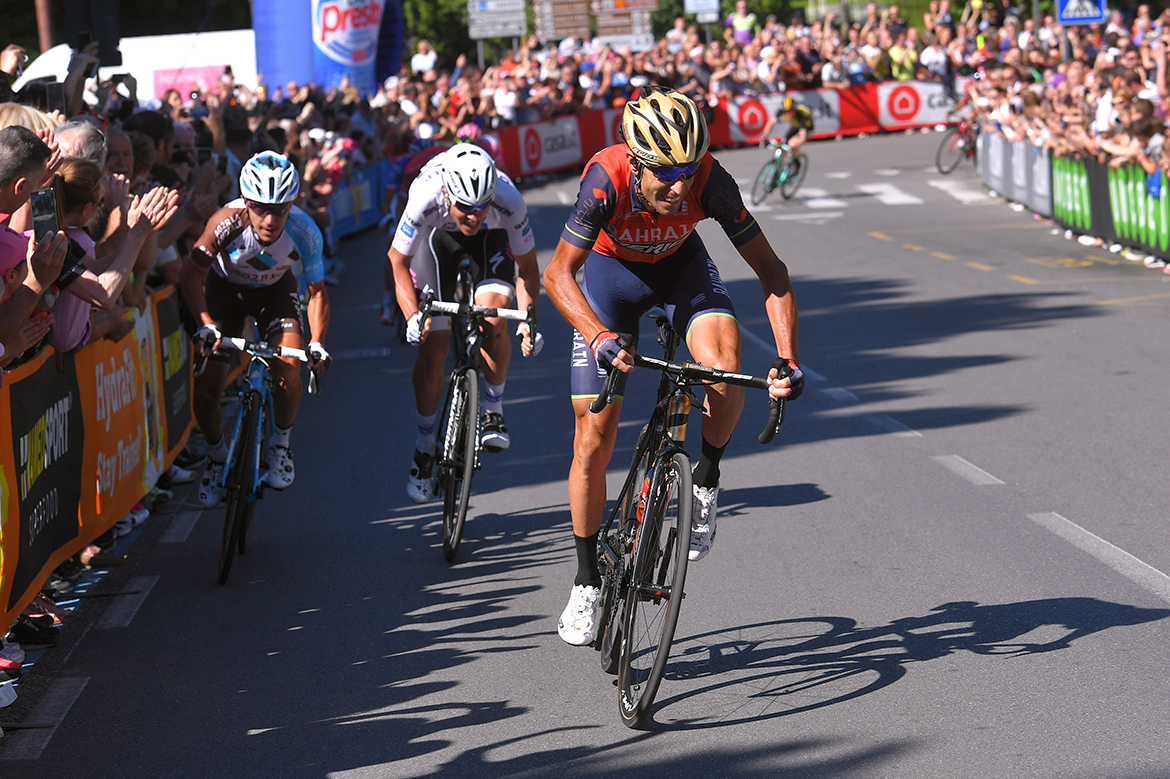
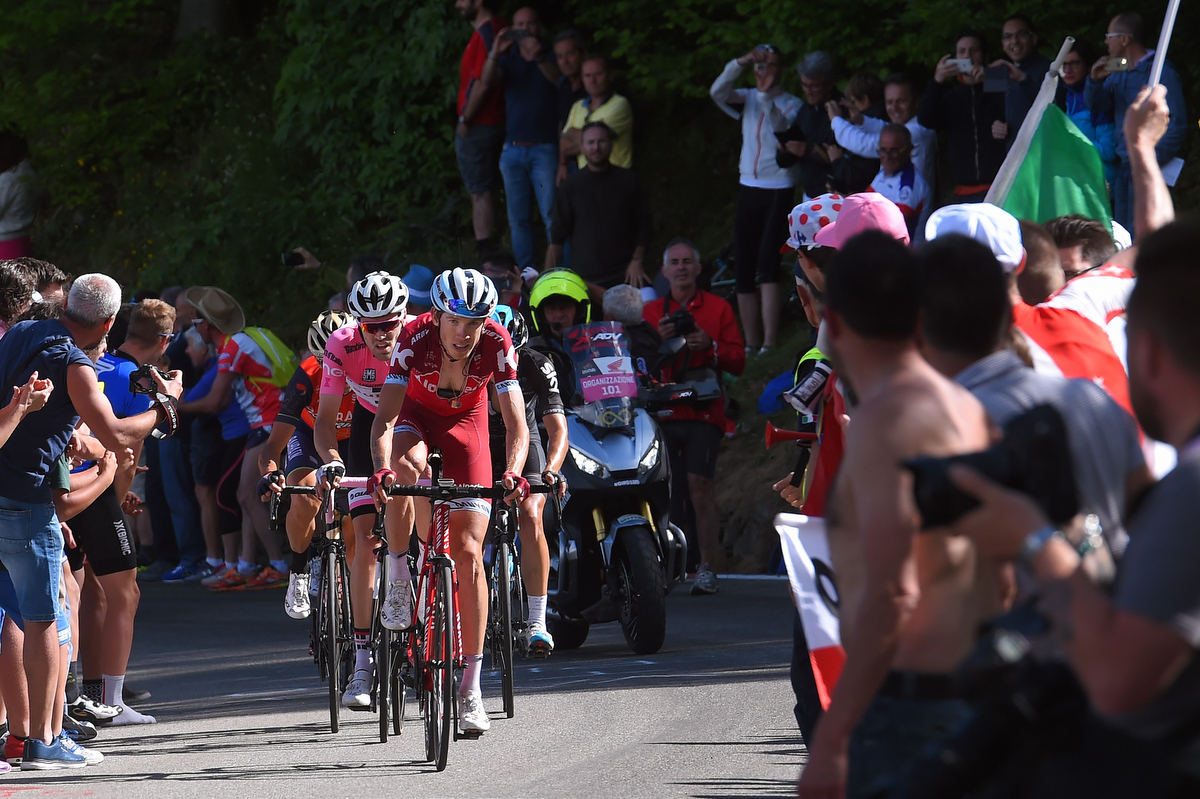
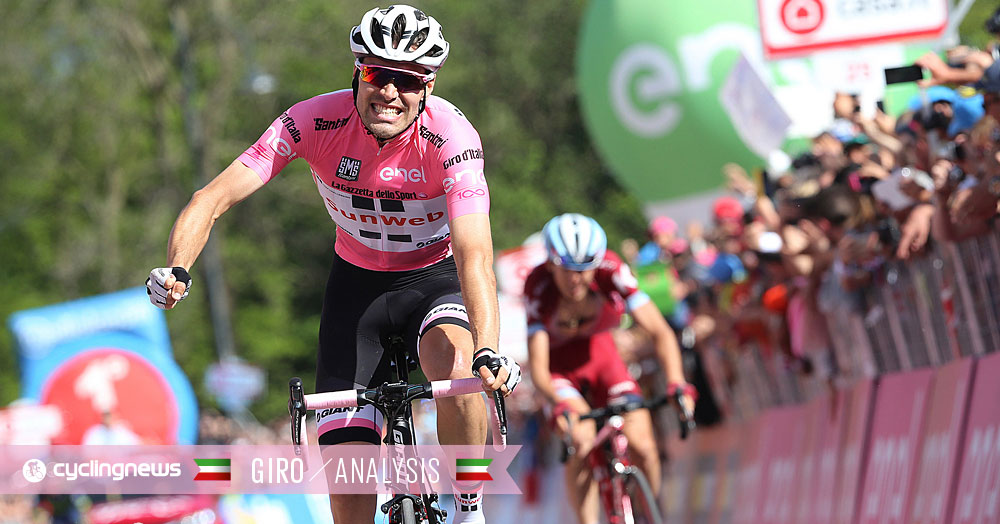
As the Giro d'Italia pauses for its third and final rest day, the question facing Nairo Quintana, Thibaut Pinot and Vincenzo Nibali is simple: how do you solve a problem like Tom Dumoulin?
Giro d'Italia: Will Dumoulin keep the climbers at bay? - Podcast
Giro d'Italia: Nibali and Quintana can be allies of circumstance against Dumoulin
Giro d'Italia: Pinot limits the damage on Oropa to stay in podium fight
Quintana survives Giro d'Italia crash scare to place second in Bergamo
Giro d'Italia: Dumoulin shows his sporting side after Quintana crashes
Nibali admits a third Giro d'Italia victory could be out of reach
Giro d'Italia: Yates sprints to best Grand Tour result yet in Bergamo
Giro d'Italia: Rest day round-up II - Podcast
Giro d'Italia: Analysing the GC contenders ahead of the final week
The answer is rather less straightforward. Dominant in the Montefalco time trial and imperious on the mountaintop finish at Oropa, Dumoulin is armed with a commanding lead of 2:41 over Quintana, 3:21 over Pinot and 3:40 over Nibali, as well as a growing sense that the race is his to lose.
Dumoulin's strength thus far has been startling, prompting some to paint him as a latter-day Miguel Indurain, a seemingly perfect prototype with no obvious weaknesses. Or, as Il Corriere della Sera pointedly put it after Oropa, "A placid Frankenstein, too monstrous to be true." The newspaper claimed Dumoulin's power to weight ratio on Oropa to be a huge 6.5kg/W, though the calculation appears to have been based on a body mass of 68 to 69kg. In an interview on RAI television on Sunday, meanwhile, Dumoulin said his weight remained between 70 and 71kg.
Whatever the true figures – and Dumoulin has expressed his willingness to release his power data after the race, as he did following his breakout 2015 Vuelta a España – the simple fact that the Dutchman caught and ultimately dropped Quintana on Oropa suffices to underline just how astonishing his level of performance has been thus far.
Dumoulin, however, is more aware than most the Giro route has played to his strengths over the opening two weeks. The Montefalco time trial was made to measure for a rider of his qualities. The summit finishes at the Blockhaus and Oropa came after flat run-ins, and Dumoulin already showed his ability to cope with such short and intense efforts at the 2015 Vuelta, most notably when he beat Chris Froome to win atop Cumbre del Sol.
The terrain in the third week rather harsher. For all that Dumoulin has reputedly focused on coping with the demands of a succession of long climbs in training, racing against one's shadow on Mount Teide is rather different to being attacked on all sides over the Stelvio or the Mortirolo, particularly when the fatigue accrued over the first two weeks is factored into the equation. A tired and ill Dumoulin's concession of the red jersey on the penultimate day of the 2015 Vuelta provides more than a glimmer of hope for Nibali, Quintana and company.
"The third week will be different," Dumoulin admitted at Oropa, and Bob Jungels (8th at 5:18) hinted how after winning in Bergamo on stage 15. "We've had very stressful stages so far this year but the profile for the first two weeks hasn't been as hard as last year," Jungels said. "This year, all of the climbing is in the last week. I expect it will be harder in the third week compared to last time."
The latest race content, interviews, features, reviews and expert buying guides, direct to your inbox!
Quintana, Nibali et al will have to hope so. As things stand, and with another, 30-kilometre time trial to come on the final day in Milan, Dumoulin's rivals will likely need to put at least five or six minutes into him over the coming week to have any hope of denying him overall victory. It promises to be quite the handicap race.
The chasing pack
On the morning after the Montefalco time trial, Bahrain-Merida directeur sportif Paolo Slongo suggested that his team and Movistar could become natural allies of circumstance as they sought to overturn their leaders' hefty deficits to Dumoulin, but there has been precious little sign of a mutual understanding in the days since.
Bahrain-Merida's Giovanni Visconti complained about a lack of cooperation from his former Movistar teammate Andrey Amador when they were in the break on the road to Bagno di Romagna, for instance, while Nibali expressed surprise afterwards that Quintana had not deigned to attack on the final climb of Monte Fumaiolo. Be it by accident or design, Nibali and Quintana's approaches will need to dovetail rather more neatly during the demanding final week. For both teams, sending riders up the road early and often to test Sunweb's resolve and try to isolate Dumoulin should be a given.
Read more on this story
- Giro d'Italia: Nibali and Quintana can be allies of circumstance against Dumoulin
- Giro d'Italia: Pinot limits the damage on Oropa to stay in podium fight
- Quintana survives Giro d'Italia crash scare to place second in Bergamo
- Giro d'Italia: Dumoulin shows his sporting side after Quintana crashes
- Nibali admits a third Giro d'Italia victory could be out of reach
- Giro d'Italia: Will Dumoulin keep the climbers at bay? - Podcast
It seems unlikely that Dumoulin's lead can be overturned in steady increments. As difficult as the four mountain stages ahead are, it is hard to envisage the Dumoulin of the Blockhaus or Oropa conceding between one and two minutes each day. If Quintana, Nibali or Pinot are to win this Giro, they instead need to find a way to make Dumoulin crack completely on one stage.
That is, on the face of it, a task easier said than done, but Quintana and Nibali at least have some previous in this department. In 2014, the Giro seemed Rigoberto Uran's to lose at the dawn of the final week, only for Quintana's controversial attack on the neutralised descent of the Stelvio to turn the race on its head. Just last year, Dumoulin's fellow countryman Steven Kruijswijk looked impregnable in the final week, right up to his crash on the descent of the Colle dell'Agnello. Nibali's lifeless Giro was reanimated at precisely the same moment.
Can they repeat the feat here? Quintana's display on the Blockhaus suggests that he can, but Nibali has underwhelmed so far, although it's worth noting that he was going an awful lot worse at the corresponding point on last year's Giro.
Third-placed Thibaut Pinot was the most defiant in the face of Quintana's onslaught on the Blockhaus a week ago, and, like the Colombian, the succession of climbs and mountain stags to come suits him well. It is unclear, however, if he will be as aggressive in the final week as he draws closer to his stated goal of a podium place in Milan.
After a sluggish start, meanwhile, Ilnur Zakarin (Katusha-Alpecin) showed signs of life with his display on Oropa, which lifted him to fifth place overall. Zakarin's directeur sportif Dimitri Konyshev insists his preparation was tailored around saving his best for the demanding third week which, at least in theory, ought to suit his diesel engine. Bauke Mollema (Trek-Segafredo) seemed to be travelling in the opposite direction when he struggled on Oropa, but the Dutchman will hope it was simply a jour sans rather than the beginning of the end. At this point, for better and for worse, nothing is set is stone.

Barry Ryan was Head of Features at Cyclingnews. He has covered professional cycling since 2010, reporting from the Tour de France, Giro d’Italia and events from Argentina to Japan. His writing has appeared in The Independent, Procycling and Cycling Plus. He is the author of The Ascent: Sean Kelly, Stephen Roche and the Rise of Irish Cycling’s Golden Generation, published by Gill Books.
